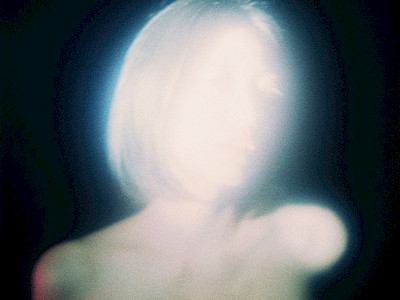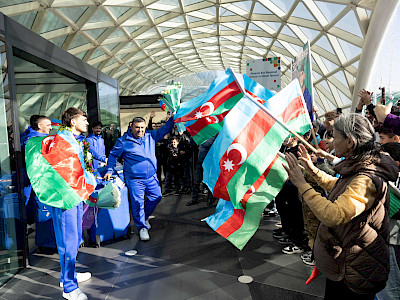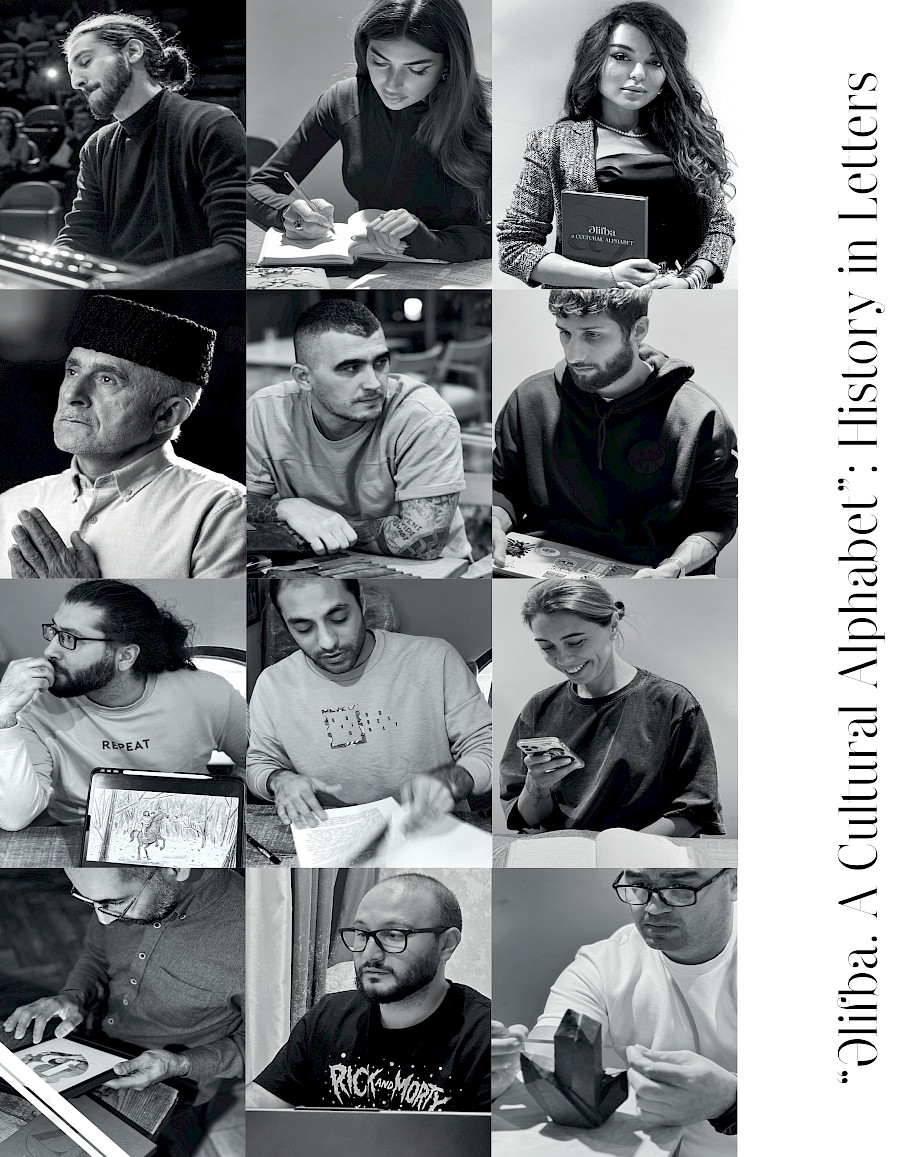
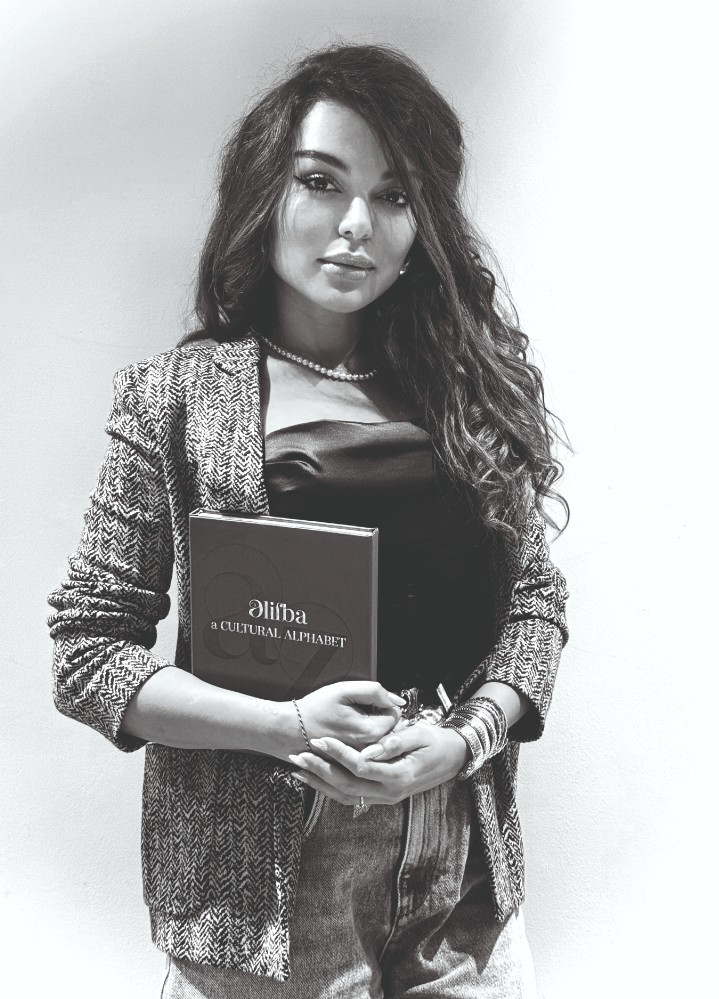
How did the concept of the “Əlifba. A Cultural Alphabet”project come about, and how long did it take to realise it?
The concept came to me when I was expecting my third child, Nariman. I was in Paris attending a children’s event with my daughter, and there were postcards with letters for sale. I bought U and N for myself and my daughter. I kept looking at them – they were very creatively done. When I got to my room, I started to draw letters and add all the objects that begin with that letter. That same night, I had a dream about an alphabet with very creative letters that had meaning, historical and cultural significance behind each letter. In the morning, I called my team and told them about the idea, and we needed to do deep research.
It took almost one year to do this book, as it was very, very important for me that the information on each letter is 100 percent accurate. This kind of research takes a lot of time. The book tells the reader about ancient Azerbaijan, moral beliefs, historical traditions, and more.
It tells the story of the Azerbaijani people and their development, going back to their roots.
Who is the primary audience for this project, and who stands to benefit from it?
This book is for everyone: kids, teenagers, and adults. It’s a very historically important book for everyone. What I love is that the information is given in a short, direct, fun way. Children will read it because it has colourful illustrations and will get to know more about their culture and history. Adults will find it amusing since I’m sure there will be something in this book that they didn’t know before or maybe knew and forgot. Also, people from all over the world will learn about our deep traditions and how amazing and unique our country is.
Ulviyya Mahmud, Editor-in-Chief of NARGIS Magazine, the inspirer of the project “Əlifba. A Cultural Alphabet”
What does “Əlifba. A Cultural Alphabet” mean to you?
For me, this project means contributing to both the present and the future, reaching your maximum potential, breaking through barriers, and continuously developing and moving forward.
Could you describe the book's layout and share any memorable moments from it?
The layout process was very enjoyable — we poured love into every page. Working 24/7, we never felt tired but were instead fueled by a huge range of positive emotions. One memorable experience
was at a café by the Bosphorus in Istanbul, where my team and I assembled the book from morning until night until the place closed. It was unforgettable.
Toghrul Maharramli,
Creative Director
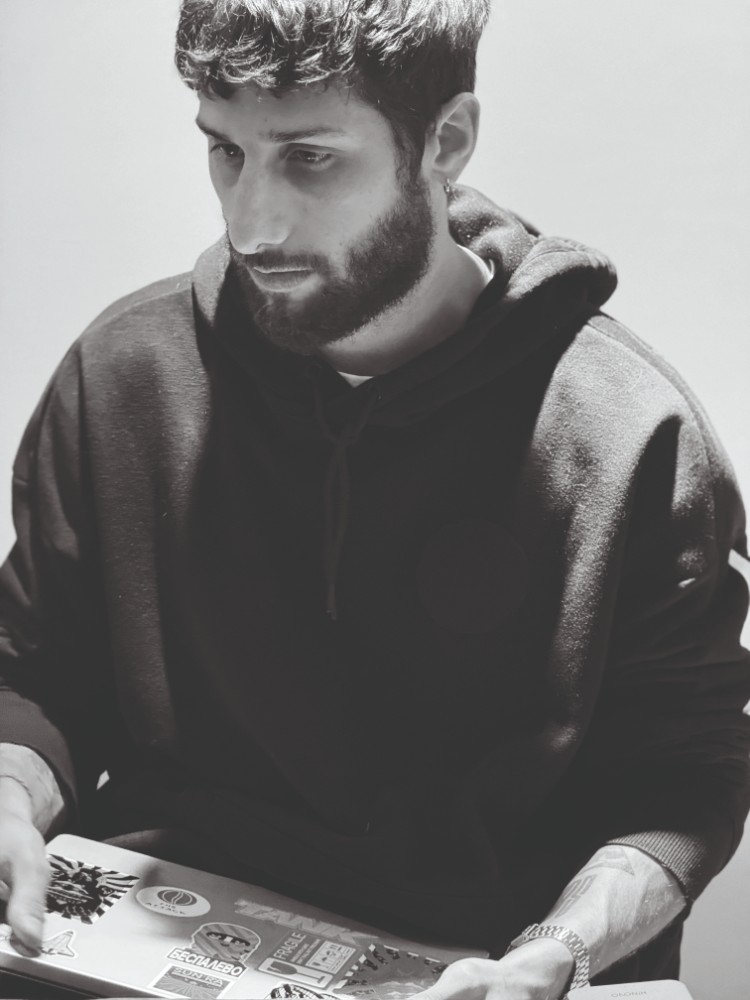
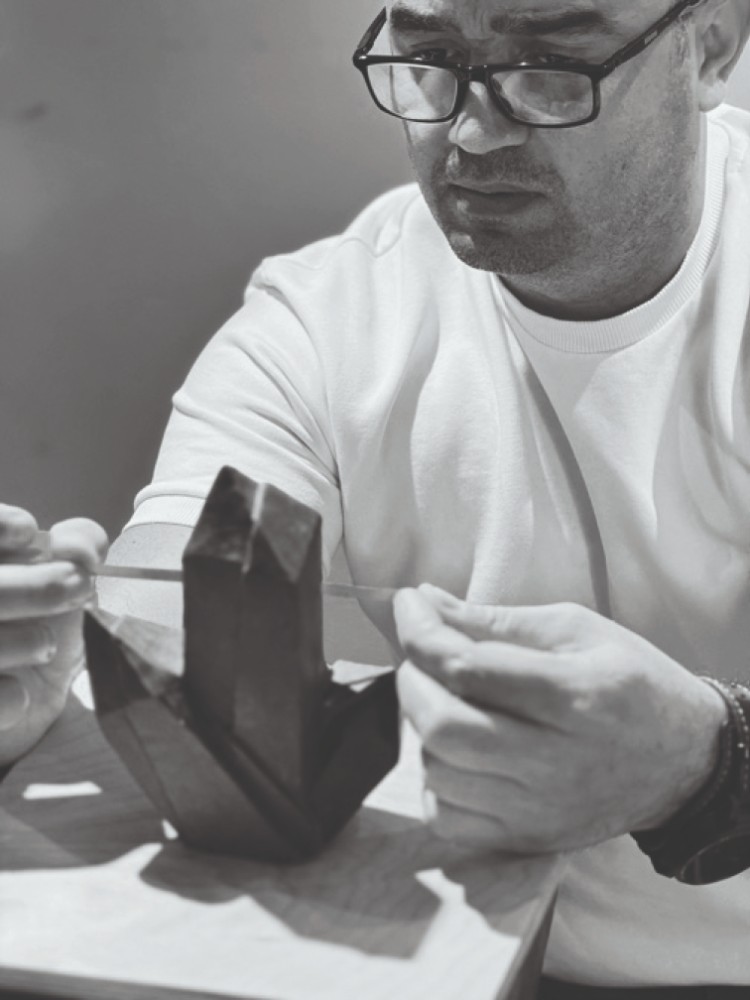
How does a sculpture come to life, and how do you determine when it's complete?
In my view, the completion of an art object is never final – it continually demands exploration, imagination, and boundless thought. A sculpture truly comes to life when it evokes emotions in its viewers.
Could you describe the process of working with crystals?
Working on crystal sculpture involves drawing inspiration from nature's associations, its structures, and designs. The forms of crystal are intricately linked by geometric lines and planes.
Despite its gem-like appearance, it's crucial to maintain the compositional foundation, as the sculpture was executed in a traditional manner.
Teymur Garibov,
Sculptor
What was the most memorable part of preparing for the project?
While working on the second part of the book, I often reflected on how our perspectives have evolved, even in our selections for the upcoming event. What I love most is that we uniquely promote our native language. With each letter, we uncover the meaning of our rich cultural heritage. It's worth noting that only Azerbaijanis contributed to this special edition, which adds to its significance.
How did you select participants for the project collaboration?
The project came together in a very natural and relaxed way. We've attracted the best professionals in their fields, many of whom we've had the pleasure of working with before. Each participant contributed pieces to a single puzzle, creating something that, in my opinion, will resonate with everyone. This project was built on a deep love for our roots and the cultural values of our rich history, making it truly special.
Nigar Gahramanova,
Curator
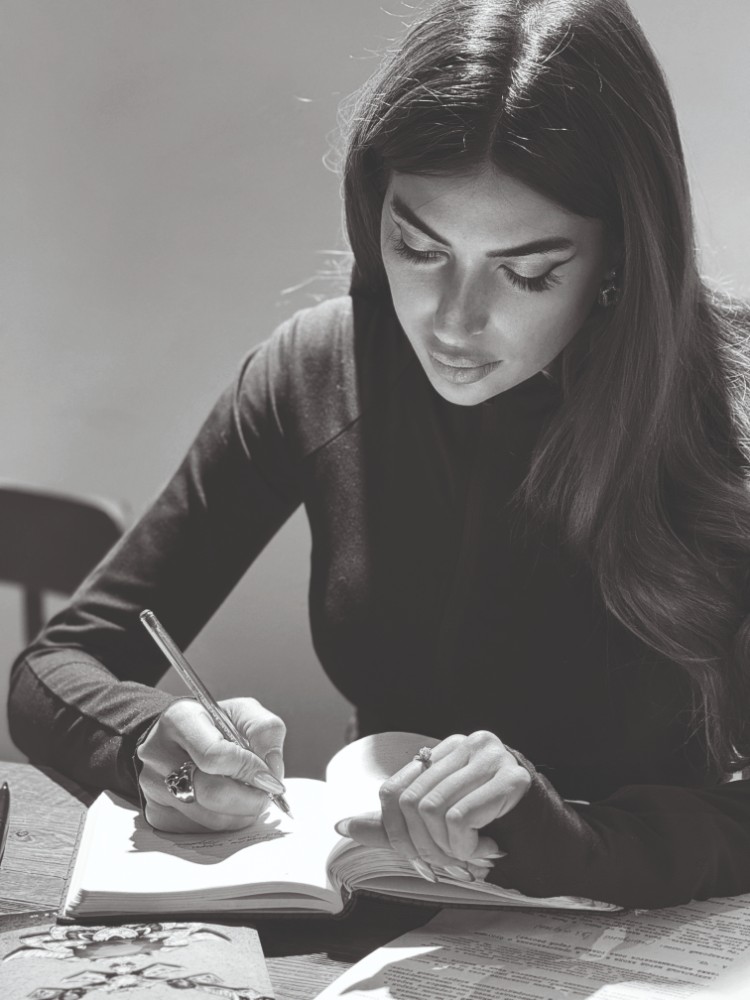
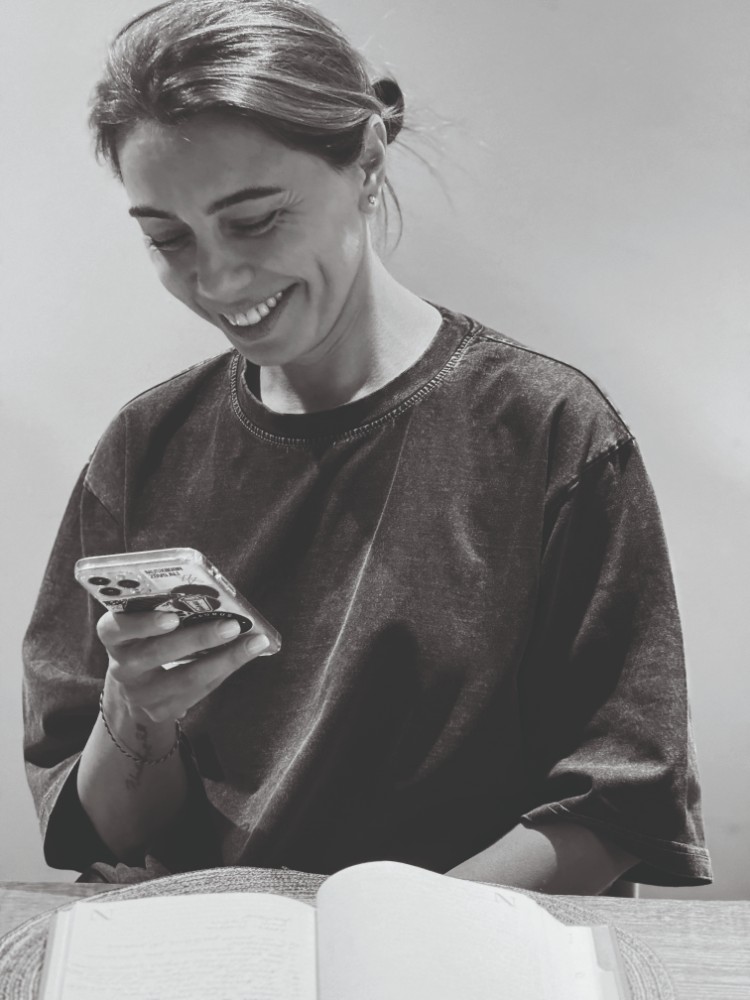
How long did it take to prepare for the project?
As this was a creative project, the entire team participated in the brainstorming process, leading to continuous additions and changes throughout. Therefore, there isn't a definitive answer to how long it took us to prepare. However, one thing is certain: once Ulviyya Mahmud shared her vision, we knew it would be great.
What was the most challenging part of the preparation process?
Well, personally, the most challenging aspect for me was gathering the entire team together in another country. Bringing together more than 15 creative minds always leads to unexpected outcomes, but aligning everyone's schedules can be quite challenging.
Gulnara Ismailova,
Marketing Manager
Why do you believe Azerbaijani Mugham has such popularity abroad?
Most art historians call mugham “cosmic” music, and I share that opinion. In cosmic dimensions, the differences between cultures disappear. Divine music speaks to the soul, and the impact intensifies with the performer’s skill. The rhythm of mugham seems to move a person. This dynamism is fundamental to the construction of mugham, spreading from thought to heart in a gradual, step-by-step process. A sensitive listener understands that mugham is not just music but also a profound science. Much depends on the pitch – if the singer is not burning himself, he cannot illuminate his surroundings.
How do you think the “Əlifba. A Cultural Alphabet” project contributes to promoting national cultural values?
Every art has an alphabet, just as every language does. Therefore, someone who does not know the alphabet will not be able to go far in science or culture. In this sense, I consider the "Əlifba" project very important for our time. Geniuses such as Nasimi, Fuzuli, Khatai, and Seyid Azim, who are renowned worldwide, wrote and created in Azerbaijani Turkish. When I play their magnificent ghazals on my mugham, I see how the energy of the words affects even those who do not know our language. I hope that the "Əlifba" project will increase love and attention for the mother tongue within Azerbaijan. Although globalisation seems beneficial in some respects, the uniqueness of each people and nation must be protected. The alphabet of national thought begins with the mother tongue – with sad lullabies and sweet bayatis.
Alim Qasimov,
Mugham performer
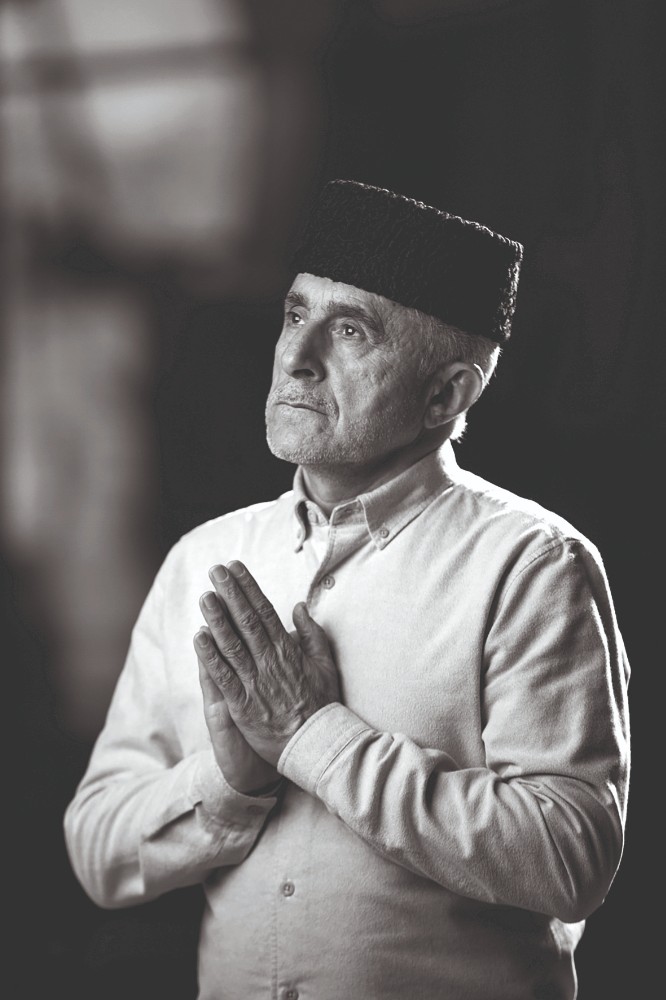
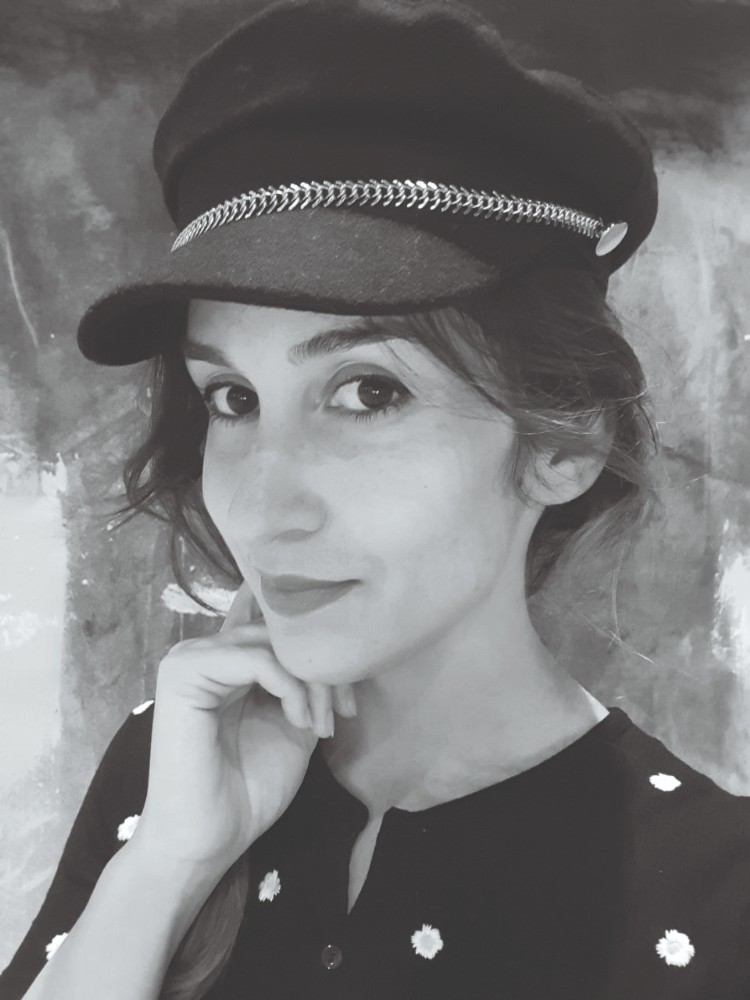
Tell us about the most memorable encounters you had while writing the texts for the project.
Imagine the task of choosing 33 words that would fully and correctly describe our culture and mentality. It doesn’t seem like it, but the shorter your text is, the more difficult it is to compose. I approached specialists, from professors to those who master musical instruments. Once everything was done, we started translating. I asked two different specialists, for instance. Each was highly educated, yet they corrected each other back and forth. At the same time, we collaborated with the illustrator by sending her photo references and adding details. Some of the photos were missing at that time, such as pictures of Aghdam, as there were not many available online before the Second Karabakh War. We requested some from the national archive. It took the team long months to ensure that every little detail in this book is perfect – from the content to the choice of paper.
Could you share any amusing stories from the project?
The story I still love to tell my friends happened on March 8th. It was a Friday, and my colleague Leyla and I spent the whole night at the office making sure there were no mistakes left in the text. Many of our partners and friends sent flowers to the office the day before, so the ground floor was full of bouquets, and there was no one but the two of us. We finished our work around 5 a.m., and as we were leaving, Leyla said, “These flowers will wilt by Monday, so why not take one of the bouquets? ”I was exhausted, so I just took one. At home, I put the flowers in water and fell asleep. Later, looking at the flowers, I found a card wishing Happy Women’s Day, signed with an unknown man’s name. Thus, I was absent all night and came home in the morning with a bouquet signed by a man’s name. Luckily, my family didn’t notice. Now, this is my favourite story.
Sona Nasibova,
Author of texts
What new aspects of Azerbaijani culture did you discover while creating illustrations for the project?
As an Azerbaijani artist, I am deeply involved in our art and culture. However, while working on this project, I discovered interesting historical facts and photographs and, most importantly, met fascinating people.
What holds more significance: the creation process of an illustration or the story it conveys?
The creative process itself is a mysterious journey of the mind. The primary role of illustration is to present the story to the reader, making it more attractive and understandable.
Orkhan Huseynov,
Illustrator
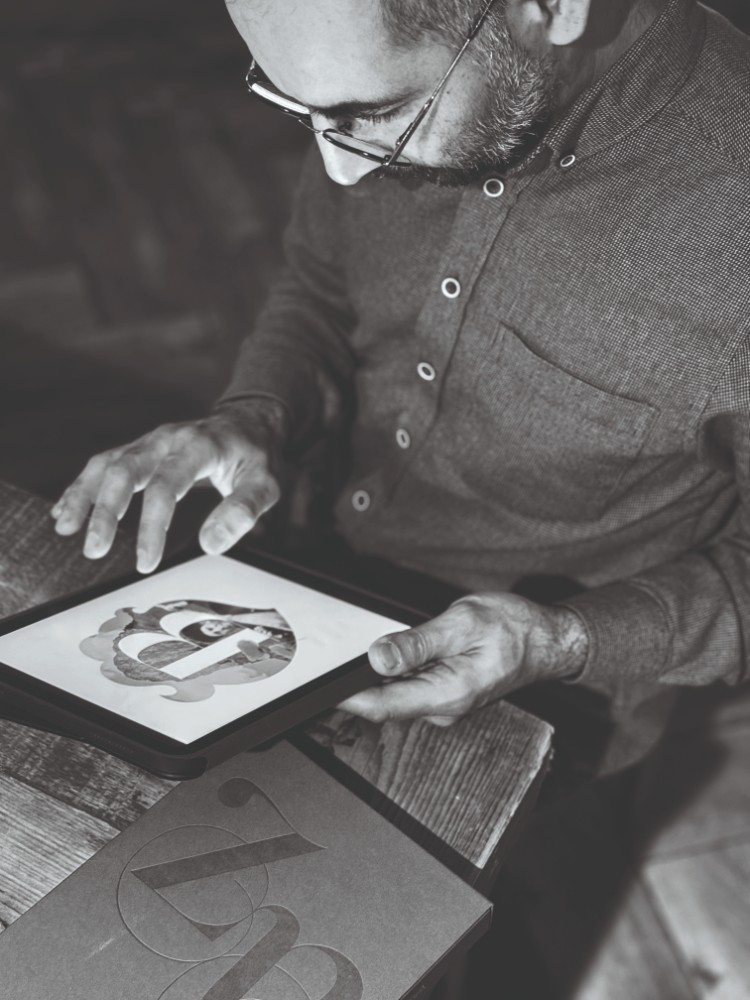
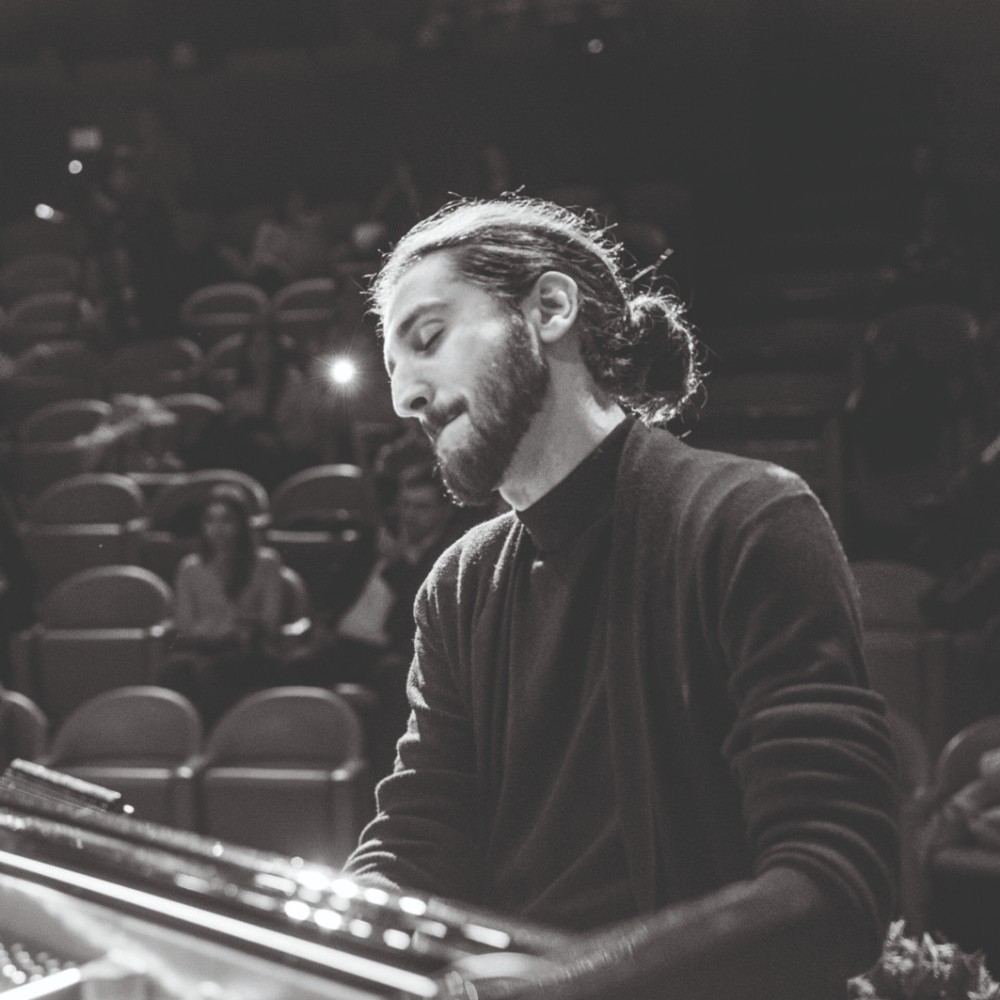
You've collaborated with NARGIS Magazine multiple times. Which project stands out the most for you?
All projects with NARGIS Magazine have been unique to me, each with its own vibes and energy. The most pleasant part of all of them is the atmosphere in which the project is nurtured, the people involved, and the warmth and passion of seeing the final outcome. Every project we've collaborated on has been specific and very special.
Could you provide more details about the composition being presented at the project's presentation?
The project premiered during one of the NARGIS events, but once “Əlifba” was introduced as an idea, it took on a new life. What could make it better than presenting it to the younger generation through electronic music? The collaboration with our golden voice, Alim Qasimov, brought another level of depth and understanding of our cultural roots.
Isfar Sarabski,
Musician
In the process, was there more creativity or routine?
The process of working on this project involved a blend of creativity and routine. Creativity was essential for developing unique and engaging content that accurately represents the rich culture and history of Azerbaijan. This included brainstorming ideas, designing characters, and crafting compelling storylines. However, there was also a significant amount of routine work, such as animating sequences, fine-tuning details, and ensuring consistency throughout the project. Balancing creativity with routine tasks was key to the s uccessful completion of the project.
What symbols of Azerbaijani culture have particularly inspired you during your work?
Several symbols of Azerbaijani culture deeply inspired me during this project. The intricate patterns and vibrant colours of Azerbaijani carpets provided a wealth of visual inspiration. Additionally, the rich musical heritage, particularly the traditional Mugham music, influenced the rhythm and flow of the animation. These cultural elements helped create a vivid and authentic representation
of Azerbaijan’s heritage in the animation.
Kanan Sheykhzamanli,
Cartoon Illustrator

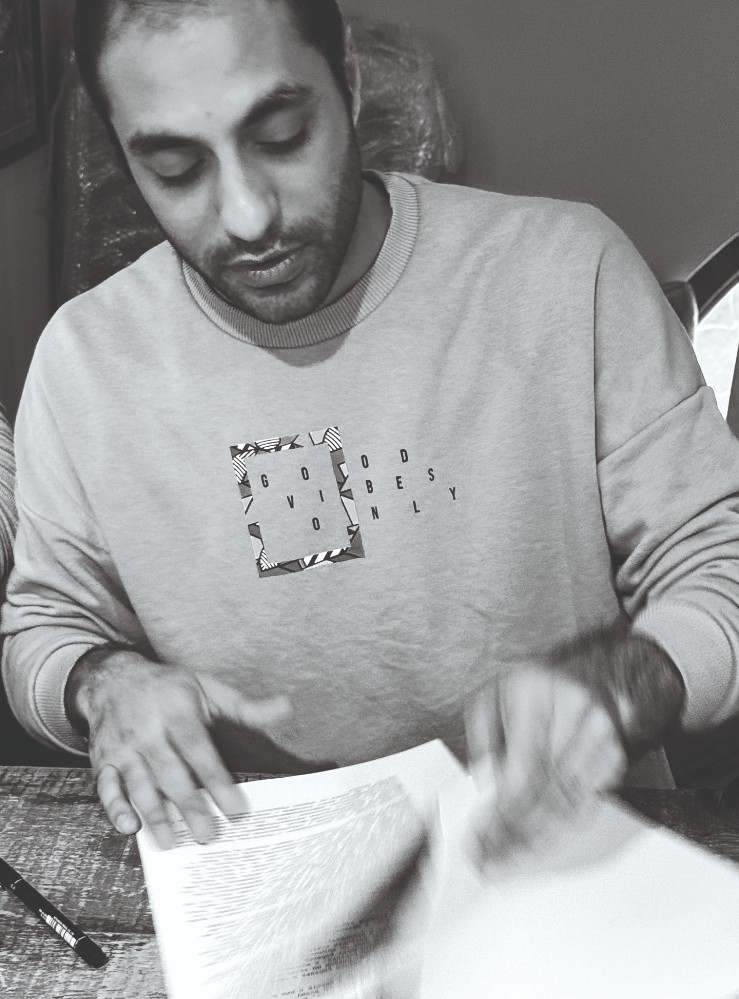
Why do you think it is so important to communicate the uniqueness of our culture to the world?
The uniqueness of a culture encompasses its way of thinking.
Of course, embracing new cultures enriches us, offering new opportunities and completely different tools for perceiving the world.
Tell us about the idea behind the documentary "History in Letters."
This film embodies our idea of sharing our worldview in order to give the world a glimpse into the manifestation of an unusually strong spirit – the essence of the culture of the Azerbaijani people.
Mekhti Abidov,
Screenwriter
What aspects of Azerbaijani culture are most captivating for someone encountering it for the first time?
Azerbaijani culture has many captivating and compelling aspects that can fascinate those unfamiliar with it. The most striking features are our ancient history and rich artistic heritage. Culture beautifully highlights how people, regardless of their backgrounds, share common threads. Visitors from other cultures will find similarities that resonate with all of humanity, showcasing our universal connections.
What challenges did you face while making the documentary film "History in Letters"?
I faced challenges such as making what seemed impossible, possible. This experience reminded me that if you focus on the finish line and let things happen naturally, new paths will always emerge to guide you. Just let it be, flow, and happen authentically. Sometimes, things that seem bad at the moment might actually be helping the subconscious mind achieve the intended final result.
Meran Ismailsoy,
Executive Producer
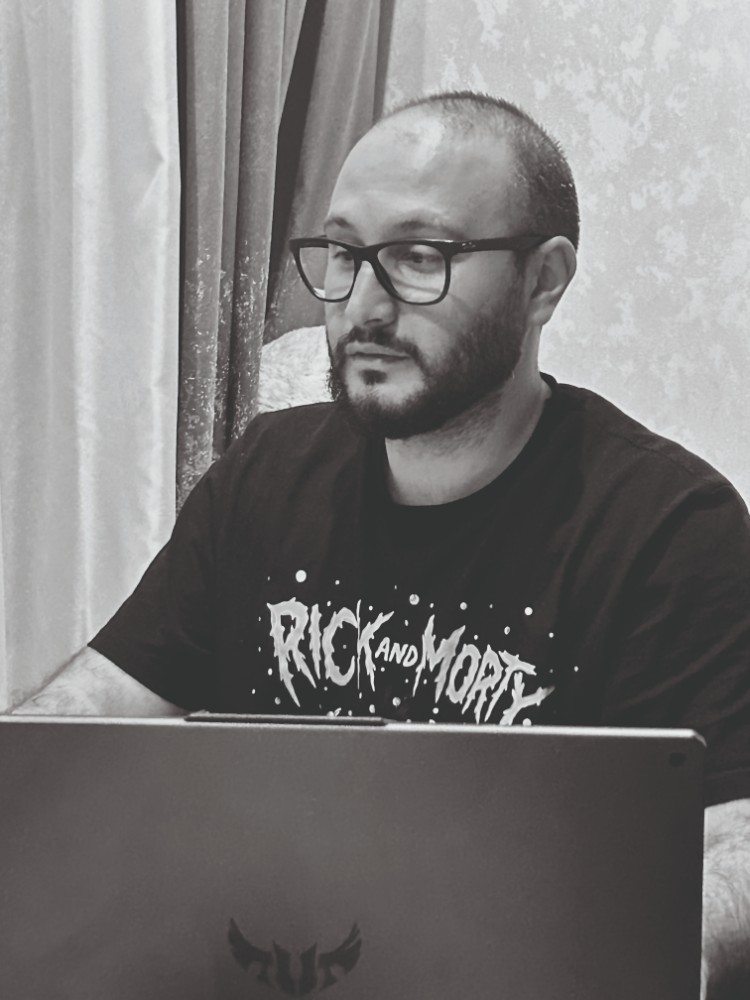
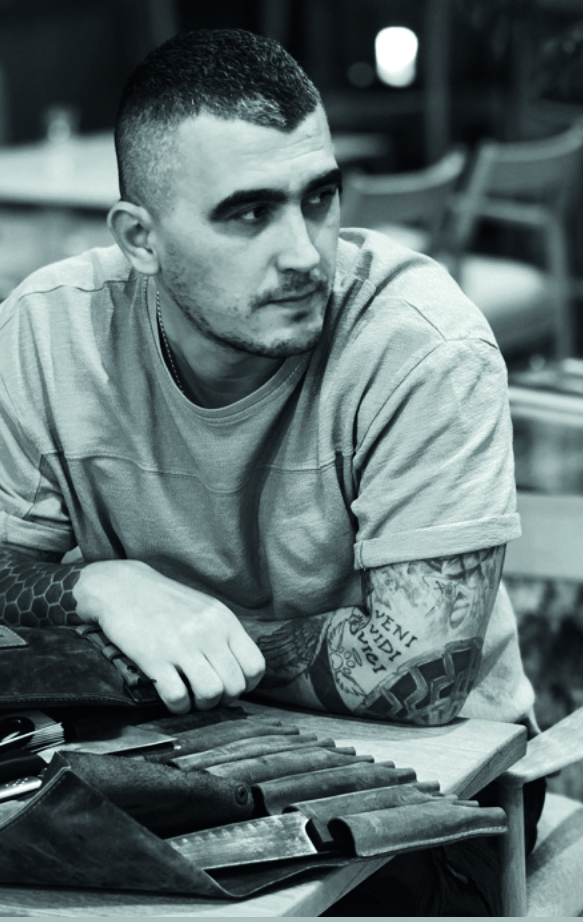
How does the national cuisine contribute to a better understanding of the country's culture?
National cuisine reflects a country's history, traditions, climatic and geographical features, as well as social customs and ethnic diversity. It plays a central role in festivals and rituals, expressing national identity and pride, and often indicates the economic and social conditions of a region. Immersing oneself in culinary traditions helps to better understand and experience a people's culture and way of life.
In your opinion, which Azerbaijani dish best encapsulates the uniqueness of our cuisine?
Azerbaijani pilaf is a main dish that reflects the richness of flavours and traditions of the local cuisine. It includes rice, meat, dried fruits, and nuts, and is prepared with special skill, demonstrating the attention to detail characteristic of Azerbaijani cookery.
Maksim Golovin,
Chef
Why is the "Əlifba" project close to your heart?
I believe that the ability to speak, write, and express one's thoughts
is one of the most important human abilities. The alphabet is the magic wand that enables us to do this. I love my native country, and everything related to its rich culture always resonates in my heart with pride and inspiration. The “Əlifba” project has become a marvellous gateway to the world of folk tales and fascinating historical facts. I hope all readers will appreciate this amazing book.
How does it feel to watch the project you were behind develop and grow before your eyes?
It's a very special feeling! Like a capable and inquisitive child with an eye to the future, “Əlifba” grew up, became more beautiful, learnt new languages, and conquered new countries. It is exciting to realise that our team, like a big careful family, took care of it, putting all their heart and love into it. A piece of my heart will always remain in this project.
Vladislav Makarov,
Art Director
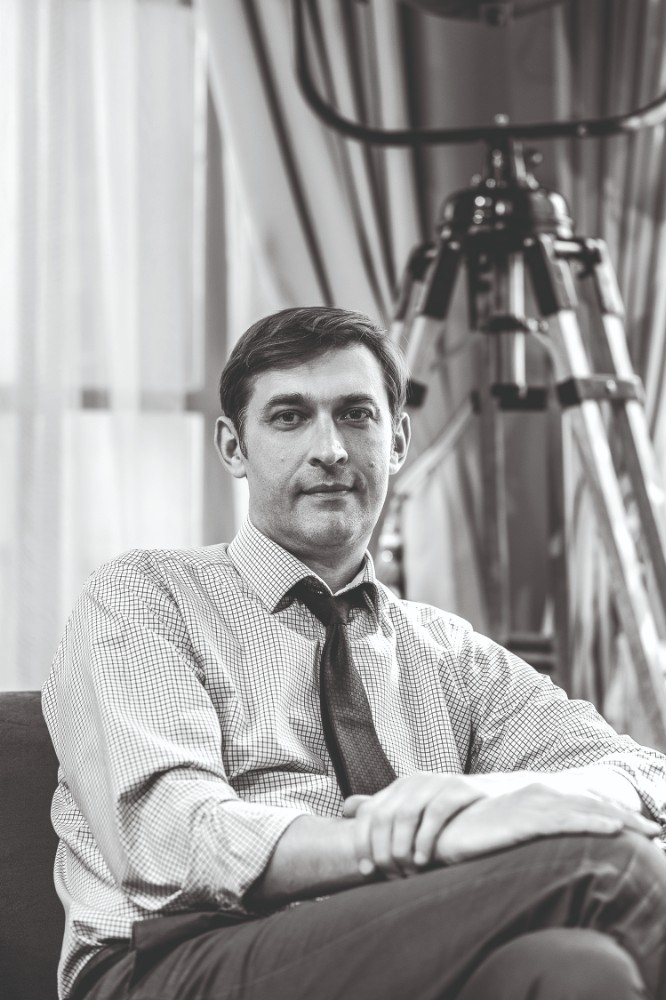
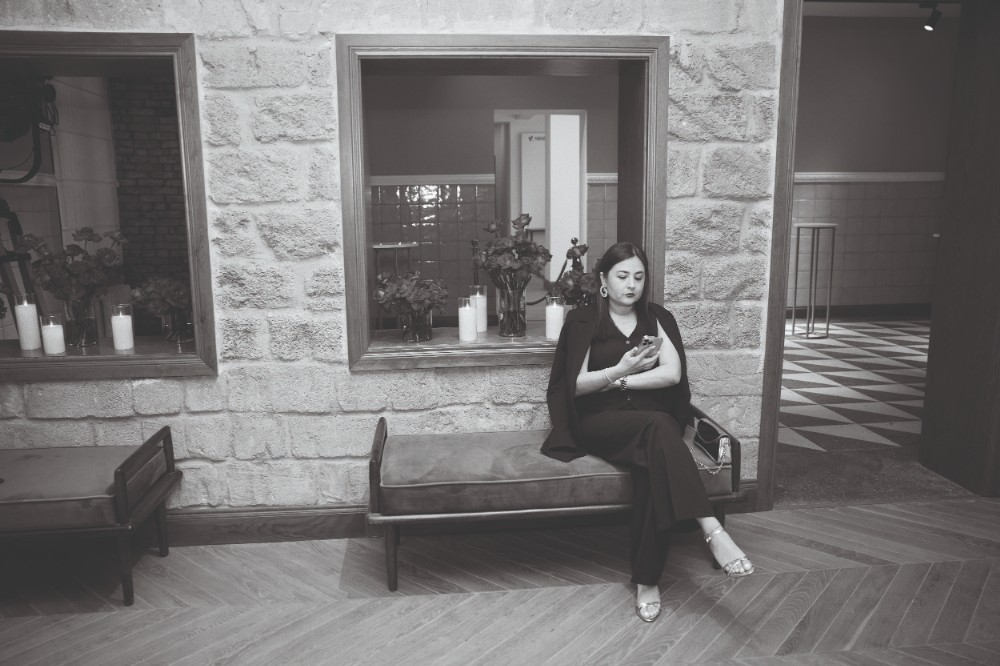
What feelings can you describe while working on the project?
First of all, it is a great sense of pride to be involved in something so significant and grandiose. It's an opportunity to engage with Azerbaijani culture, whose richness I am in love with. The customs and traditions are always invisibly present in life, and the symbols and characters depicted in this special book continually take me back to my childhood.
What do you expect from this project?
I envision "Əlifba" as a cherished board book in every home. It can and should be read to children, who, through short yet rich texts and stunningly beautiful illustrations, can capture and remember a wealth of information about their history and culture. It can also be given as a valuable gift to anyone who wants to learn about Azerbaijan and experience vivid emotions.
Nigar Maharramova,
Adviser


